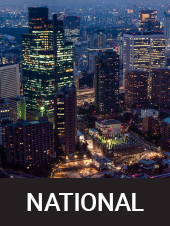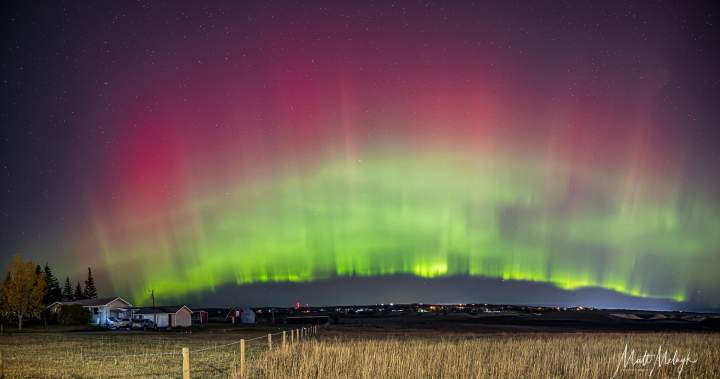Recent solar activity has Calgary photographer Matt Melnyk excited to capture shots of the night sky.
“The sun is extremely active right now. There are massively big sunspots that are coming into view,” explained Melnyk. “Just this morning one of those sunspots caused an ex-flare (solar flare), which produced a full halo CME (coronal mass ejection)… We could get a massive solar storm as early as Nov. 11 to the 12.”
Melnyk has been taking photographs for decades and jumps at the opportunity to shoot aurora borealis whenever he can.
“I’ve been photographing aurora for about 20 years now,” Melnyk said. “I took my first aurora photograph in Inuvik, Northwest Territories, and I became instantly hooked.”
While Melnyk’s home office is has its fair share of professional-grade camera gear, he tells Global News the average person doesn’t need to invest as much as he has.

Get breaking National news
For news impacting Canada and around the world, sign up for breaking news alerts delivered directly to you when they happen.
“As long as you put your cellphone on a tripod to keep it steady, then you just basically do a long exposure,” said Melnyk. “Set it up in pro-mode (or use night sight on Android) and then do an eight-, maybe ten-second exposure. Cellphones can actually get pretty decent photos.”
With a day job as a commercial pilot Melnyk has more opportunities than others to catch the dancing displays of lights – many from the vantage point of the cockpit. But some of his favourite places to take photos are not too far away from the Calgary city limits.
“Towards Drumheller (is) one of my favourite spots,” Melnyk shared. “It’s super super dark there, and there’s tons of cool photo opportunities you can get and see the aurora borealis there.”
Ideally when there’s increased solar activity, the night sky is mostly free of clouds, and light pollution is minimal, there’s a good chance to capture the northern lights.
But of all the places Melnyk has seen the lights, there are still places on his bucket list he hopes to one day visit in order to capture them.
“Finland and Norway,” said Melnyk. ” Those are two countries that frequently see some of the best aurora borealis I’ve ever seen (in photos).”
Aurora borealis occurs when solar flares or coronal mass ejections expel charged particles into space. Carried by solar winds, the particles enter the Earth’s atmosphere near the north and south poles. As those charged particles pass through the atmosphere and collide with oxygen and nitrogen particles, energy is discharged creating the colourful display in the night sky.
Read the full article here


